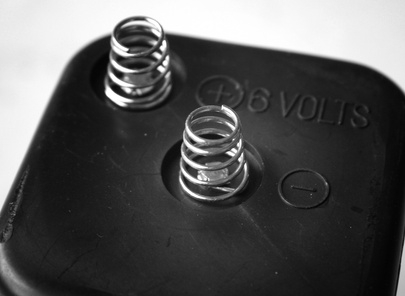
You should know how to identify battery terminals, particularly if you're wiring a car battery or device that has to be connected to the correct polarity. Every battery has two terminals: one positive and one negative. For current to power your device, it has to make a complete circuit. This is done by connecting a wire between the positive terminal of your battery and your device and another between the negative terminal of your battery and your device. This creates a circuit and allows electrons to flow from the positive terminal of your battery to your device then return to the negative terminal of your battery.
Look closely at your battery. If it's a car battery or a battery pack, it has two poles protruding from the battery. This is where the two wires connect. If it's an AA or similar size battery, it has one terminal on top and another on the bottom.
Look at one of the terminals. Next to the terminal is a mark or label. If it is labeled "+" or "pos," it is the positive -- or live -- terminal. If it is labeled "-" or "neg," it is the negative terminal.
Check the other terminal. It will be labeled the opposite of the terminal you first identified. An additional difference on car batteries and batteries with higher output volts is the design of the terminals. For example, car batteries terminals have a larger positive terminal so the battery clamps can only connect to the correct terminal.